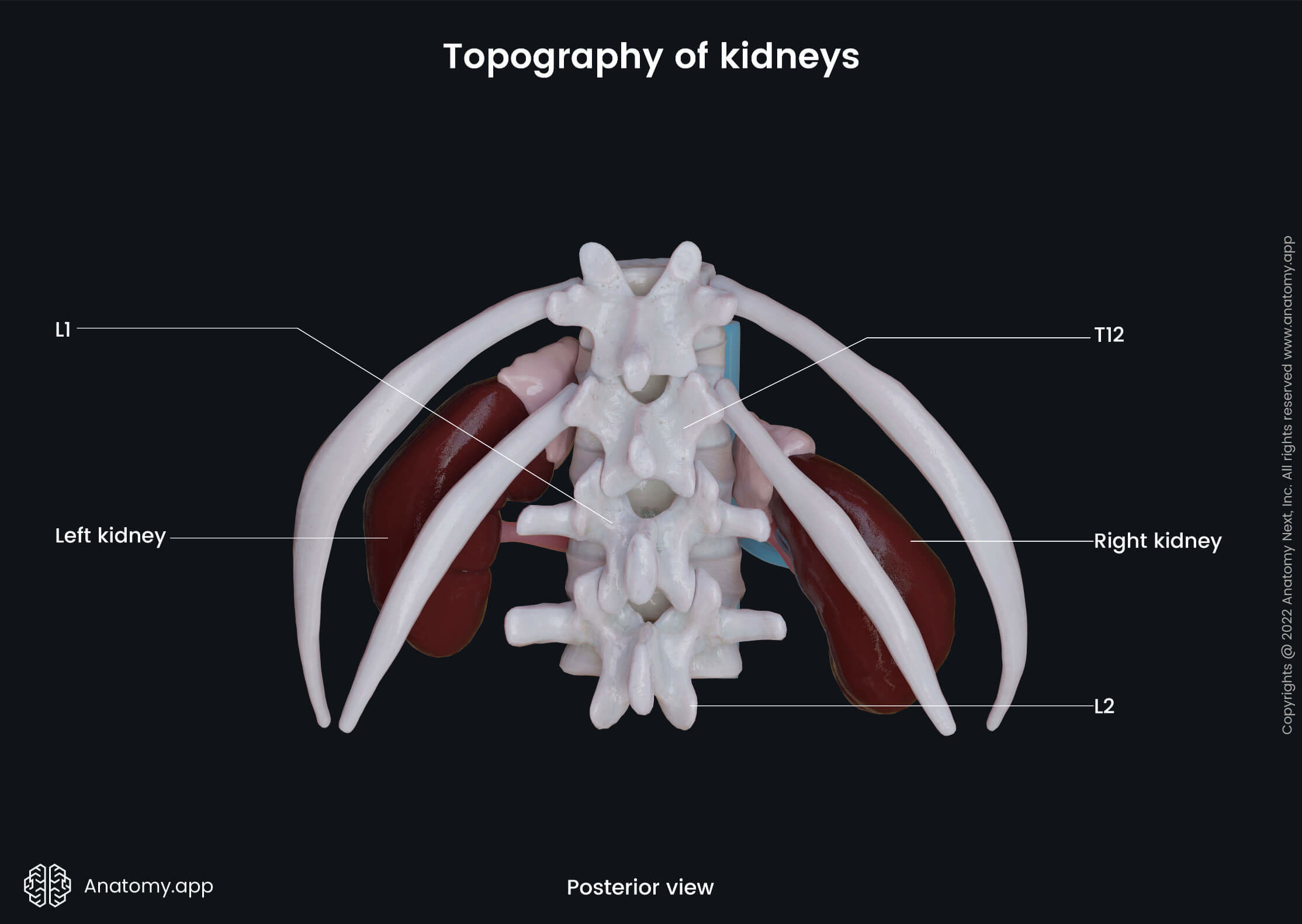- Anatomical terminology
- Skeletal system
- Joints
- Muscles
- Heart
- Blood vessels
- Blood vessels of systemic circulation
- Aorta
- Blood vessels of head and neck
- Blood vessels of upper limb
- Blood vessels of thorax
- Blood vessels of abdomen
- Blood vessels of pelvis and lower limb
- Blood vessels of systemic circulation
- Lymphatic system
- Nervous system
- Respiratory system
- Digestive system
- Urinary system
- Female reproductive system
- Male reproductive system
- Endocrine glands
- Eye
- Ear
Renal artery
The renal arteries (Latin: arteriae renales) are two lateral branches of the abdominal aorta. They arise just inferior to the superior mesenteric artery at the level between vertebrae L1 and L2. The renal arteries provide a large portion of the total blood flow to the kidneys. Up to 1/3 of the total cardiac output can pass through these arteries to be filtered by the kidneys. The term "renal" comes from the Latin word renes, meaning kidney.
There are some differences between the right and left renal arteries. The right renal artery usually is longer than the left one. This aspect is due to the position of the aorta, inferior vena cava, and kidneys in the human body. The right renal artery passes behind the inferior vena cava, right renal vein, head of the pancreas, and the descending part of the duodenum. The right renal artery also lies somewhat lower than the left one. The left renal artery, on the other hand, lies behind the left renal vein, body of the pancreas and splenic vein, and is crossed by the inferior mesenteric vein.

Each renal artery divides into four or five branches before reaching the hilus of the kidney. Each artery also gives rise to some small inferior suprarenal branches to supply the suprarenal glands and ureters, as well as also some surrounding tissues. Some individuals may have accessory renal arteries (one or two), which is especially common on the left side. They usually arise from the aorta, travel above or below the main renal artery. Instead of entering the hilus of the kidney, these accessory arteries typically pierce the upper or lower part of the organ.
